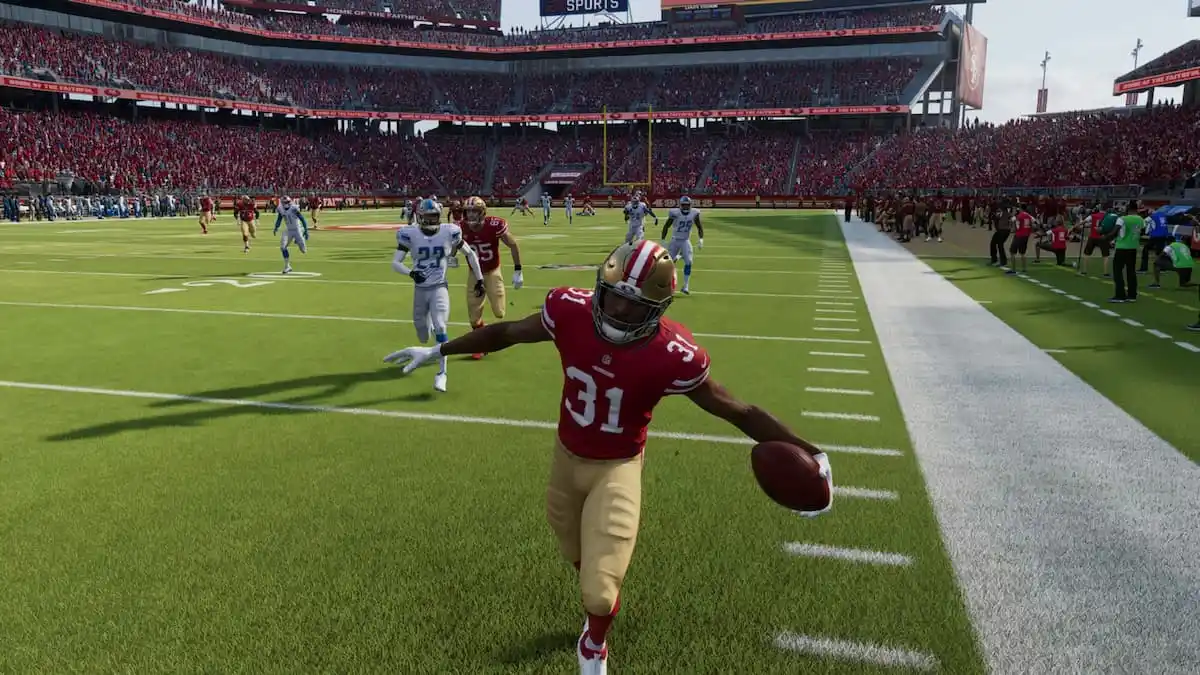In order to be a successful Madden player, knowing how to “work the sticks” and run the ball is vital. Run plays are great for chipping away at opposing defenses, gaining yards, and even setting up for big plays in the passing game. No matter what kind of player you want to be in Madden 22, you need to be able to run the ball. If you’re struggling with this, we’ve got you covered. Let’s go over some controls you need to know, plus some tips and tricks that can help you get on your way.
Know the controls
Before you use any run plays, you need to learn the controls in Madden 22. Once you call a formation, set up, and hike the football to start a running play, you’ll be able to move the ball carrier once he has the pigskin with the left stick. The right stick can be used to perform various moves that can be used to either evade or push through a defender. For example. ball carriers can perform a truck (right stick up), a dead leg (right stick down), or a spin (move the right stick either clockwise or counter-clockwise), with the right stick, among other moves.
Here are some other controls you should know for running the football in Madden 22:
- Sprint – RT/R2
- Protect Ball – RB/R1
- Hurdle – Y/Triangle
- Stiff Arm – A/X
- Dive – X/Square
- Spin – B/Circle
- Slide (QB) – X/Square (Tap)
- Juke – RS/Right Stick (Left or Right)
Find the right playbook
If you want to get creative with the running game, you might want to start with the playbook. Playbooks are the engine of any offense, so having the best plays, regardless of whether it’s a traditional run play, or an RPO play, can be a game-changer. As far as what playbooks are good for the running game, the Ravens’ playbook, much like in Madden 21, is a great option for those who want to pound the ball with a half back or look to run options with the QB. Other playbooks that have good running plays include the Browns, Saints, and 49ers.
Look for the holes
When running the ball, make sure to watch for any holes that might pop up in the middle of the field. If your opposing line is strong enough to stop the opposing defenders from rushing you, there’s a good chance that those players can clear up some space for you. As a ball carrier, you need to make the most of that space when you see it because you can pick up a lot of yards in a short period of time.
Read the opposing defense
Once you get a hang of things from a technical perspective, now take a look at the game from a mental point of view. In order to running
Each play, you will typically see anywhere from 7-8 players right near the line of scrimmage or the box. The numbers of players on the line will depend on whether the opponent is running a 3-4 (typically three defensive linemen at the line) or a 4-3 (usually four).
When running the ball, your job is to get an idea as to what the opponent is planning to run based upon how the defense is set up in the box. If the front seven is pressed to the line, it’s highly plausible that the opponent is planning a blitz, which can stuff a run. Game plan for blitz-heavy opponents, and a good way to loosen things up is to throw the ball often to confuse the opponent, and find mobile QBs and speedy backs, especially in MUT.
Diversify your play calling
We already touched on this in the last tip, but we can’t stress this enough: don’t be predictable when calling plays.
To avoid this, try alternating run and pass plays. Run a dive or a stretch one play, and a mesh play on the second. Don’t be afraid to run the football on a second and long. Make sure you are keeping things fresh, in order to avoid situations where you become overly predictable. If you consistently call running plays on first downs, don’t think an opponent won’t notice.







Published: Aug 30, 2021 07:45 pm